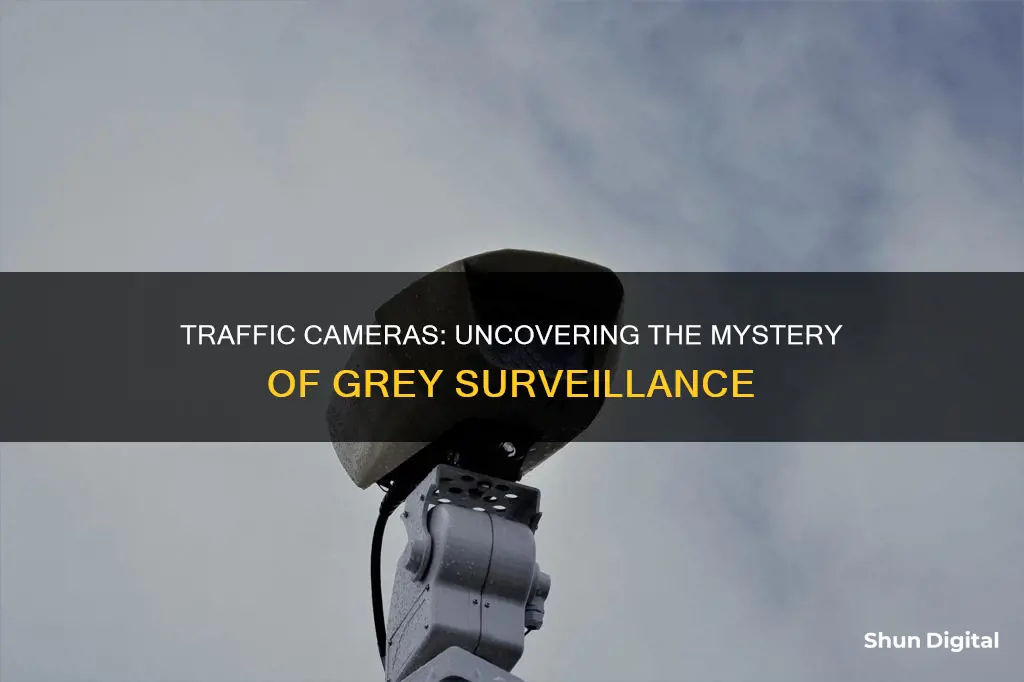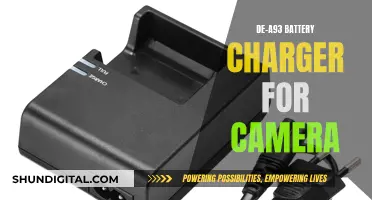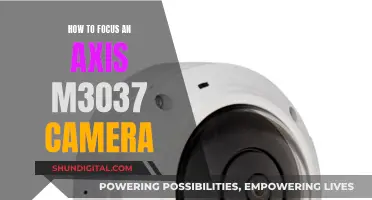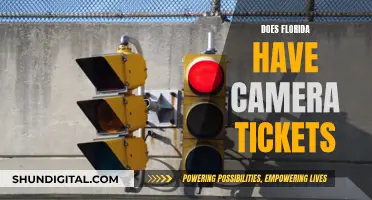
Grey traffic cameras are used for traffic modelling purposes to identify how roads are used. They monitor the flow of traffic to see how roads can be better managed. They are not equipped with speed radars or number plate recognition technology, so they cannot be used to detect speeding fines or motoring offences. Grey cameras are usually installed on motorways and major A-roads as these areas need constant monitoring.
| Characteristics | Values |
|---|---|
| Colour | Grey |
| Type of camera | Traffic monitoring camera |
| Purpose | Surveillance, traffic flow management, monitoring accidents and incidents |
| Flash | No |
| Speed radar | No |
| Number plate recognition | No |
| Location | Motorways, major A-roads |
| Operator | Highways Agency, Highways England |
| Data storage | N/A |
| Privacy | No images of cars or drivers are taken |
| Appearance | Small, similar to CCTV cameras |
| Mounting | Mounted on poles or overhead gantries |
What You'll Learn
- Grey cameras are used for traffic modelling purposes to identify how roads are used
- They monitor the flow of traffic to see how roads can be better managed
- They are not equipped with speed radars or number plate recognition technology
- They are often installed on motorways and major A-roads
- They are moved around the country and use special cables to detect how many vehicles have travelled across an area

Grey cameras are used for traffic modelling purposes to identify how roads are used
Grey traffic cameras are used for traffic modelling purposes to identify how roads are used. These cameras are installed by Highways England and are placed on several main roads to monitor the flow of traffic and see how roads can be better managed. They are not used for speed enforcement purposes and are not equipped with speed radars or number plate recognition technology.
Grey traffic cameras are often confused with speed cameras, which are usually yellow boxes that are easily identifiable to road users. Speed cameras are in place to catch motorists breaking the speed limit or violating strict motoring rules. Motorists caught speeding may be fined £100 and issued three penalty points, with charges increasing depending on the severity of the crime.
Highways Agency CCTV cameras are another type of grey camera used purely for surveillance. These small cameras are used to manage traffic flow and monitor accidents and incidents on major roads. They are commonly found on motorways and major A-roads.
The latest widely-used technology in motorway speed cameras is called HADECS 3 (Highways Agency Digital Enforcement Camera System 3). These systems are often mounted on poles at the side of the motorway and are painted grey. They can cover up to five lanes of a motorway and operate fully digitally for fast processing of speeding penalties.
Another type of camera sometimes seen on motorways is painted or finished in dark blue. These cameras are operated by the traffic-monitoring company TrafficMaster and are used exclusively to observe traffic and detect traffic jams. The information is often used in radio traffic alert bulletins and sometimes by in-car sat nav systems.
Strategic Camera Positions on F1 Cars: A Detailed Look
You may want to see also

They monitor the flow of traffic to see how roads can be better managed
Grey traffic cameras are installed for traffic modelling purposes to identify how roads are used. They monitor the flow of traffic to see how roads can be better managed. These cameras are moved around the country and use special cables to detect how many vehicles have travelled across an area.
Grey traffic cameras are not equipped with speed radars or number plate recognition technology, so they cannot be used to detect speeding fines or motoring offences. They are used purely for surveillance and to help monitor accidents and incidents on major roads.
Highways England uses 1,100 Automatic Number Plate Recognition (ANPR) cameras across the UK's motorway and trunk road network to monitor traffic flow and provide estimated journey times. While they 'read' a vehicle's number plate, the data is instantly converted into non-unique reference numbers, making it impossible for Highways England to trace a particular vehicle using its network of ANPR cameras.
Grey traffic cameras are often small and discreet, and are commonly found on motorways and major A-roads as these areas need constant monitoring. They are usually mounted on poles or motorway gantries and are painted grey or white, rather than yellow, to indicate that they are used for observation rather than speed enforcement.
Understanding Camera's Depth Mode: How It Works
You may want to see also

They are not equipped with speed radars or number plate recognition technology
Traffic cameras, also known as red light cameras, speed cameras, road safety cameras, or photo radar, are used to detect motoring offenses such as speeding, running red lights, or unauthorized use of bus lanes. While some traffic cameras are equipped with automatic number-plate recognition (ANPR) technology, not all of them have this feature.
In particular, the small grey cameras used by highway agencies for traffic management are not equipped with speed radars or number plate recognition technology. These cameras are purely for surveillance and are used to manage traffic flow and monitor accidents and incidents on major roads. They are typically installed on motorways and major A-roads to help highway officers check congestion levels and take appropriate actions, such as alerting drivers through messages on overhead gantries.
Similarly, bus lane cameras, which are usually similar in appearance to CCTV cameras, do not have speed radars. Instead, they capture the registration of vehicles that are driving in the bus lanes during restricted times.
While ANPR technology is not present in all traffic cameras, it is an important tool for law enforcement and traffic management. ANPR cameras can be used to identify untaxed and uninsured vehicles, stolen cars, and for mass surveillance of motorists. They can also be employed for congestion charge enforcement, high-occupancy vehicle lane monitoring, and toll-booth enforcement, among other applications.
Unlocking Camera Raw: Preview Power
You may want to see also

They are often installed on motorways and major A-roads
Traffic cameras are often installed on motorways and major A-roads to monitor traffic levels and manage congestion. These cameras are typically operated by national or regional highway authorities, such as Highways England in the UK. They are usually mounted on overhead gantries, tall poles, or 12-metre high masts on verges to get a clear view of the road.
These cameras are distinct from speed cameras, which are designed to enforce speed limits and issue speeding fines. Traffic cameras, on the other hand, are primarily used for traffic management and observation. They help highway officers monitor traffic flow and identify areas of congestion. When high traffic levels are detected, officers can change alerts on gantries and issue warnings to drivers through online platforms and local media.
In addition to managing traffic flow, traffic cameras can also assist in emergency response. By continuously monitoring the roads, highway officers can quickly detect incidents such as stranded vehicles, pedestrians in the road, or crashes. This enables them to promptly dispatch emergency services or send a traffic officer to provide assistance.
While traffic cameras are not typically used for speed enforcement, in some areas, they may be utilised to monitor yellow box junctions and bus lanes, and issue fines for violations. However, their primary purpose remains to observe and manage traffic flow rather than enforce speed limits.
Overall, traffic cameras installed on motorways and major A-roads play a crucial role in traffic management and road safety. By providing real-time information on traffic conditions, they enable highway authorities to make timely decisions and take appropriate actions to ensure the smooth flow of traffic and the safety of road users.
Destroying Traffic Cameras: Effective Ways to Evade Surveillance
You may want to see also

They are moved around the country and use special cables to detect how many vehicles have travelled across an area
Grey traffic cameras are used to monitor traffic and are often found on motorways and major A-roads. They are typically used to manage traffic flow and help monitor accidents and incidents. These cameras are not equipped with speed radars or number plate recognition systems. Instead, they are used purely for surveillance and observation. They are usually small and discreet, and are painted grey or white, rather than the bright yellow commonly associated with speed cameras.
In the UK, there are around 7000 cameras as part of the country's road network. These cameras are not fixed and can be moved around the country. They are often placed on poles or overhead gantries and can cover up to five lanes of a motorway.
Some grey traffic cameras use special cables embedded in the road to detect vehicles. These cables are known as 'piezo' strips and can calculate the speed of a vehicle by measuring the time it takes to travel between two points. This information is then synchronised with the camera to photograph any offending vehicles.
The images captured by these cameras are monitored by highway officers who can take appropriate action to reduce congestion or respond to incidents. While these cameras do not issue speeding fines, they play a crucial role in maintaining road safety and managing traffic flow.
Focusing Your J7 Prime Camera: Tips and Tricks
You may want to see also







